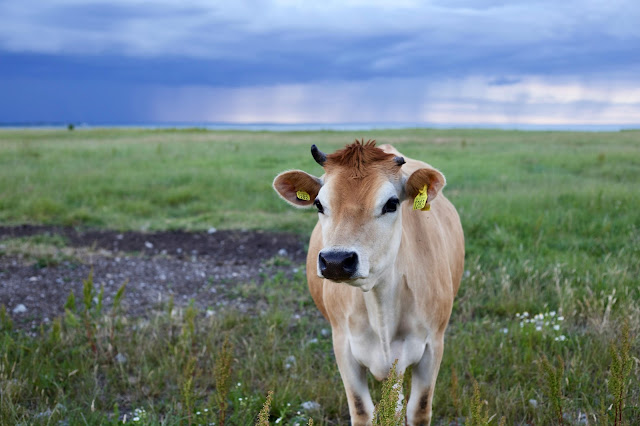The Remarkable Cow: An In-depth Exploration
The cow, scientifically known as Bos taurus, is one of the most iconic and economically important domesticated animals worldwide. With a rich history spanning thousands of years, cows have deeply influenced human civilization, agriculture, and culture. In this comprehensive overview, we delve into the biology, behavior, uses, and cultural significance of this remarkable creature. |
| All About Cows |
Read More : Animals World - Explore the Marvels of the Animal Kingdom
x
Biology and Anatomy:
Cows belong to the Bovidae family, which also includes other cloven-hoofed mammals such as bison, buffalo, and goats. They are large herbivores characterized by their sturdy build, four-chambered stomachs, and distinctive cloven hooves. The digestive system of cows is highly specialized for processing plant matter, particularly grasses and other fibrous vegetation. Physically, cows typically have a broad, muscular body supported by four sturdy legs. Their coat coloration can vary widely, ranging from solid black, brown, or white to various patterns and combinations thereof. Additionally, cows possess a unique set of horns, though hornless (polled) breeds also exist.Read More : About Eagle bird
Behavior and Social Structure:
Cows are social animals that often form tight-knit groups within herds. They exhibit complex social behaviors, such as grooming, play, and communication through vocalizations and body language. In the wild, their herding instinct serves as a defense mechanism against predators, with individuals cooperating to protect the group. Within a herd, cows establish hierarchical structures based on factors like age, size, and dominance. Dominant individuals often occupy central positions within the group and may exert control over resources such as food and water. Uses and Economic Importance: Cows play a pivotal role in agriculture and food production, serving as sources of meat, dairy, leather, and other valuable products. Dairy cows, specifically bred for milk production, yield vast quantities of milk used to produce various dairy products like milk, cheese, yogurt, and butter. Meanwhile, beef cattle are raised primarily for their meat, which is consumed worldwide in various forms, including steaks, burgers, and stews. In addition to meat and dairy, cows also provide leather, a durable material used in the production of clothing, footwear, upholstery, and accessories. Furthermore, cow-derived byproducts like gelatin, tallow, and bone meal find applications in diverse industries ranging from cosmetics to pharmaceuticals. |
| cow facts |
Cultural Significance:
Throughout history, cows have held profound cultural significance in many societies around the globe. In Hinduism, for example, cows are revered as sacred animals symbolizing fertility, wealth, and maternal nurturing. They are often associated with deities such as Kamadhenu, the divine cow that grants wishes and fulfills desires. Similarly, in ancient Egyptian mythology, cows were revered as symbols of motherhood and fertility, with the goddess Hathor depicted as a celestial cow nurturing the pharaoh and his subjects. In some African cultures, cows are central to rituals, ceremonies, and social customs, symbolizing wealth, prestige, and prosperity. Moreover, cows have inspired countless works of art, literature, and folklore across diverse cultures, reflecting their enduring influence on human imagination and creativity. From the pastoral landscapes of European painting to the sacred cow sculptures of ancient Mesopotamia, cows have left an indelible mark on artistic expression throughout history.Read More : About of octopas
Challenges and Conservation:
Despite their cultural and economic significance, cows face various challenges in the modern world, including habitat loss, overgrazing, and competition with wild herbivores. Additionally, intensive agricultural practices, such as factory farming, have raised concerns about animal welfare, environmental sustainability, and public health. Efforts to address these challenges include sustainable farming practices, conservation initiatives, and advancements in animal welfare standards. Organizations and individuals worldwide are working to promote responsible stewardship of cattle populations, mitigate environmental impacts, and improve the welfare of farm animals. In conclusion, the cow stands as a symbol of resilience, adaptability, and interconnectedness within the natural world and human society. From its vital contributions to agriculture and food security to its cultural significance and enduring presence in art and mythology, the cow continues to shape our lives in profound and multifaceted ways.x


